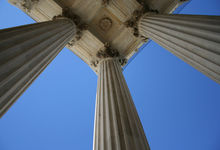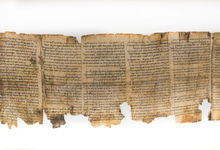Ministry (20): A second glance at the image of God
“Adam”—that’s the name of the first man, right? Actually the word means something completely different. And it has a lot to say about gender equality. However, this can only be recognised by someone who reads the Bible carefully.

God created human beings in His image: as man and woman. Both genders are of the same dignity and both of them have the same responsibility. That’s what it says in the account of the creation.
In the account of the creation? No sooner has one finished the first chapter of the Bible before a whole other account of the creation of the world, the animals, and the first human beings starts again in Genesis 2: 4. And there are both differences and similarities between these two accounts.
Contradictory versions?
The first account is a sober, no-frills summary of events, which portrays the emergence of a perfect world. The second account is a literarily embellished narrative that describes how the world came to be what it is today.
According to this more detailed narrative, God first creates the man and only then creates the woman from his rib to be his helpmate. And that implies a clear hierarchy, doesn’t it? But wouldn’t that contradict the gender equality that is so evident in the first account of the creation?
Not at all—because this popular version misrepresents the actual biblical events. A closer look at the Hebrew terminology demonstrates this.
Understanding the words
The term adamah means “earth” or “soil”, and this is the material from which God shapes His human creation. The narrative refers to this new being as the “adam”, a play on words that roughly translates to “the earthling”. At first, this term is used to refer to man in general. It is only in Genesis 5 that the word ultimately takes on the function of a proper name.
This genderless man does not receive a helpmate, but rather a “helper”. And in Hebrew this is the same word that is found in the Psalms, for example, when God Himself is addressed as our “help” (Psalm 33: 20; 70: 5).
Down to the very bones
And then there is still the exclamation: “This is now bone of my bones.” These words conclude the portion of the account that begins with God’s stated intention to make a “helper comparable to him” (Genesis 2: 18). It is from this same earth that the Lord creates the animals. “But for Adam there was not found a helper comparable to him.”
It is only an operation under full anaesthetic, so to speak, that provides Adam with a corresponding counterpart: “This is now bone of my bones and flesh of my flesh” (Genesis 2: 23). This means something to the effect of: “Here is another being that is just like me!”
It is from this perspective that the matter of the rib is to be understood, because it too emphasises that both humans are made of the same “material” and are thus of the same nature and being.
A common message
Anyone who is familiar with the linguistic and cultural backgrounds will therefore read the second account of the creation differently:
- God creates man, breathes into him the breath of life, and in so doing grants him personhood. The creation of man in the image of God, which appears in the first account of the creation, is reflected here once again.
- God grants the man a corresponding counterpart. Here the interrelationship between man and woman as the image of God is once again evident.
- God gives man—note the emphasis here on “man” as a noun that refers to both genders—the mandate to cultivate and preserve His creation (Genesis 2: 15). No distinction is made between man and woman either here or afterward.
The second account of creation thus expresses the same basic message as the first, even though the narrative is elaborately embellished. And this common message states: both genders are of equal dignity, equal value, and equal responsibility.
The second account of the creation still has one more continuation which explains how and why the world came to be what it is. This will be the focus of the next part in this series.
Photo: wideonet - stock.adobe.com























